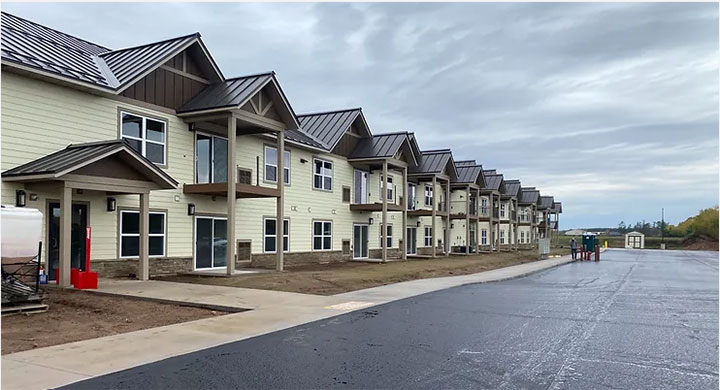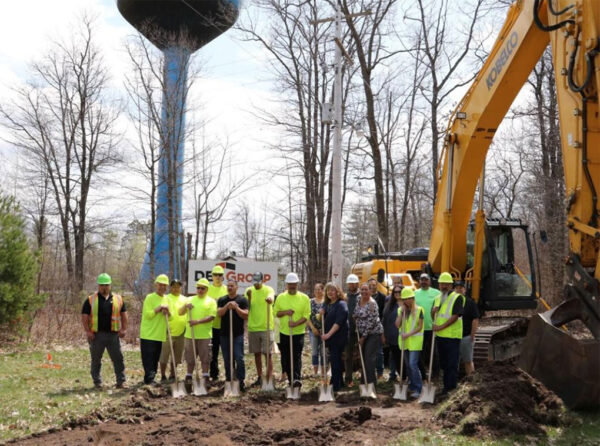success story
Adding infrastructure spurs development
A new water main supports new housing

If there is one thing the Lac Courte Oreilles (LCO) Band of Lake Superior Ojibwe has desperately needed, it is housing.
A recent study by University of Wisconsin-Extension shows the waiting list for apartments for the tribe more than doubled between 2018 and 2023.
“We are around 300 units short, just within LCO. That’s about half the size of our current housing stock of about 600 apartments,” says Jordan St. Germaine, director of the tribe’s Grants and Planning Department. “After the pandemic, the crisis increased tremendously, and it impacted our workforce. We couldn’t get teachers, police officers, public service workers, or health care workers because it’s so hard to get housing up here. We were struggling.”
Tribal leaders allocated funding from the American Rescue Plan Act—the post-COVID-19 stimulus package—to develop a $7 million, 40-unit apartment building on tribal land. But the property had no water or sewer connections, and installing the infrastructure would cost millions of dollars more, putting too big a squeeze on the tribe’s budget.
A grant from WEDC gave LCO the financial boost it needed to build the water main.
New water and sewers
 WEDC provided a $4.6 million Workforce Innovation Grant to install four miles of water pipes, closing a loop that now connects two distribution lines south of the Sevenwinds Casino in Hayward. The grant also paid for sewer lines for the apartment building, says Willard Gougé, Jr., director of public works for the tribe.
WEDC provided a $4.6 million Workforce Innovation Grant to install four miles of water pipes, closing a loop that now connects two distribution lines south of the Sevenwinds Casino in Hayward. The grant also paid for sewer lines for the apartment building, says Willard Gougé, Jr., director of public works for the tribe.
The apartment building was completed in fall 2023 and quickly filled, with 153 applicants for the 40 apartments. “Everyone who lives there is working,” Gougé says. “The tribe already offered housing to families with children and those with financial needs, but this is different. These are regular working people.”
A survey shows 5% of the tenants have jobs in law enforcement, 11% in construction, 15% in hospitality, 18% in health care, 18% in government/public administration, and the remaining 33% in child care/youth services, tribal enterprises, housing, and education.
St. Germaine says one resident who moved there from North Dakota is employed by LCO to help with opiate abatement. “We’re really benefiting just from that one person,” she says. “I think (the new apartments) really did help to get some of these important positions filled.”
Future economic development
Housing remains a high priority for LCO. “There’s still a huge homelessness problem here. We have three shelters, and one is completely full,” St. Germaine says. “More housing is needed, but we have to figure it out financially.”
In the meantime, the infrastructure project will also serve a new LCO health clinic, set for completion in early 2025, and will encourage new businesses to open in the area, Gougé says. “The new water main allows for economic development, as the construction lies within an area where the tribe would like to pursue some new developments.”
St. Germaine says the location was strategically chosen. In addition to the new health clinic, within two miles of the water main are Sawyer County’s largest employers, the biggest traffic corridor between Hayward and the reservation, the tribe’s child care center, and its schools.
“We can add housing there and along the highway, and more tribal land could be used for retail shops and tourism opportunities,” St. Germaine says. “It is a great place for tourists to visit, and any funds that help us build housing can make a huge impact.”
“The new water main allows for economic development.”



